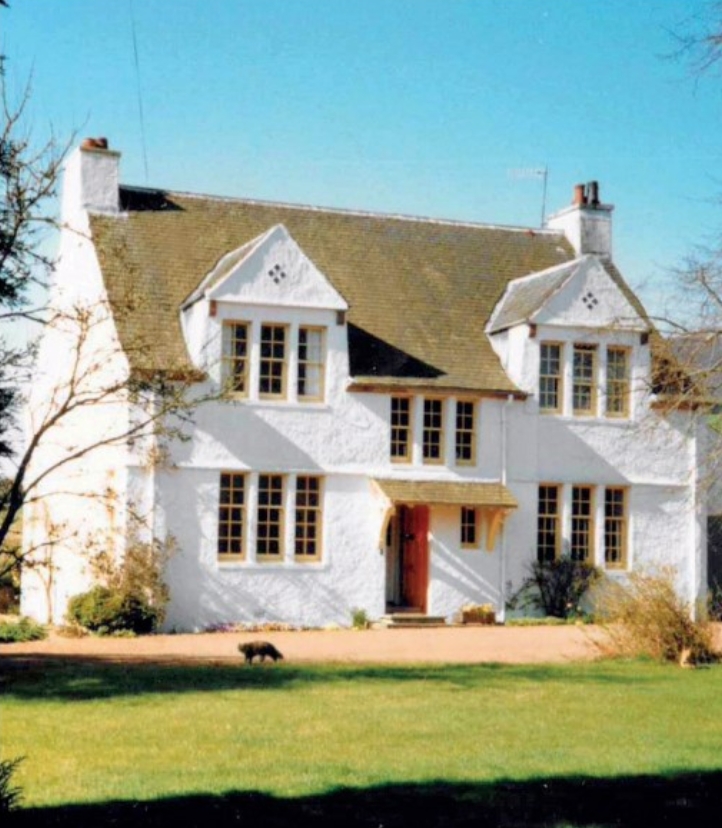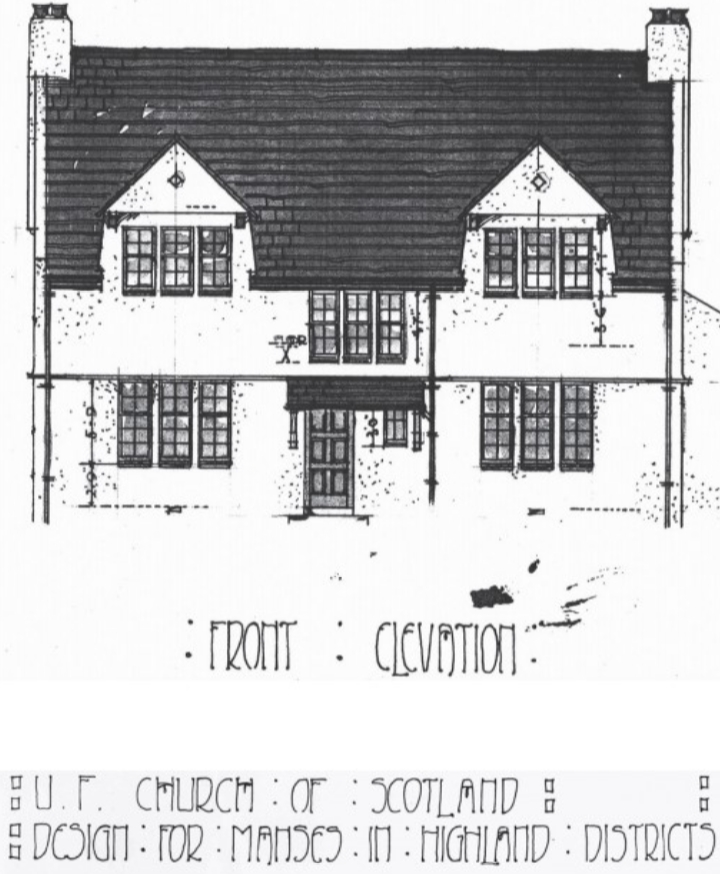United Free Church of Scotland: Design for Manses in the Highland Districts
A series of chance encounters led to the author unearthing something of the history of a series of early 20th-century manses, built for its clergy by the United Free Church of Scotland.

|

|
| The author’s former home in Symington in 1987. Why a standard Highlands design was used in the Southern Uplands is a mystery. | Plans by JW and J Laird, Glasgow, dated 1907. |
My journey started with the words of Colin McWilliam, writing in the newly published Lothian volume of The Buildings of Scotland: ‘This flair for enlisting architectural originality was inherited by the United Free Church.’
We had recently purchased a manse with an arts-and-crafts feel at Biggar Road, Symington, now South Lanarkshire, in which we lived from 1986 to 2001. All my pre-web researches into the history of the house proved fruitless, except for the lease plan by a surveyor dated 1908 with the valuation roll confirming occupation in 1910. Key source documents such as the church minute books were missing. From 1990 family matters took priority.
A decade later, we were thinking of moving but a series of chance encounters in 2000 provided some of the answers. While researching for a short break in the Highlands, I came across ‘our house’ as a B&B in Kiltarlity, near Beauly. The owner confirmed that other houses of this standard design existed throughout the Highlands at Aultbea, Kildary and Drumnadrochit. His house had been slightly customised with a bay window replacing a tripartite window and an extra window in the gable. The architect and any plans were unknown.
On passing the manse in Drumnadrochit, I noticed the addition of Tudor gablets. A month later I was introduced to my new head of planning who had moved south from the Highlands. His house at Bower in Caithness was for sale and, yes, it was a former United Free Church manse, albeit heavily altered. He gave me a set of photocopied plans. The originals were held by a local architect who had recovered them from a skip. He mentioned other manses at Shebster, Lybster, Dunbeath, Alness and Lochcarron. Most have been customised to meet the aspirations and purse of the local congregation. At Lochcarron, coursed stone was used instead of the coat of harl over random rubble and brick. The drawings titled ‘UF Church of Scotland: Design for Manses in the Highland Districts’ were by JW and J Laird Architects, 163 Hope Street, Glasgow, dated 1907. On hearing this, an architect friend in my local village remarked that this was the first tenement refurbishment he carried out in the 1980s. Now, of course, we have the web, and the architect’s history including my information can be found on the new dictionary www.scottisharchitects.org.uk.
In 2001 we sold up. However, on a recent holiday to Lewis and Harris, I sped past a few more of these manses, albeit more radically altered, with smaller dormers and the use of bipartite windows to meet the exigencies of the extreme weather. I still occasionally wonder why my former home in the Southern Uplands used the Highlands design.
This article was originally published as ‘In search of Highland manses’ in IHBC's Context 158 (Page 40) in March 2019. It was written by Andrew Millar, a retired member of the IHBC.
--Institute of Historic Building Conservation
Related articles on Designing Buildings Wiki
- Caithness Broch Project.
- Conservation.
- Conservation in the Highlands and Islands.
- Development of sustainable rural housing in the Scottish Highlands and Islands.
- Engaging communities in our Highlands and Islands.
- IHBC articles.
- Lord Leverhulme on Lewis and Harris.
- Manse.
- New architecture of Scotland's west coast.
- Orkney gables.
- Re-thatching a Hebridean blackhouse.
- The challenges and opportunities of conservation in the Highlands and Islands.
- The Institute of Historic Building Conservation.
IHBC NewsBlog
Old Sarum fire in listed (& disputed) WW1 Hangar - Wiltshire Council has sought legal advice after fire engulfed a listed First World War hangar that was embroiled in a lengthy planning dispute.
UK Antarctic Heritage Trust launches ‘Virtual Visit’ website area
The Trust calls on people to 'Immerse yourself in our heritage – Making Antarctica Accessible'
Southend Council pledge to force Kursaal owners to maintain building
The Council has pledged to use ‘every tool in the toolbox’ if urgent repairs are not carried out.
HE’s Research Magazine publishes a major study of the heritage of England’s suburbs
The article traces the long evolution of an internal programme to research 200 years of suburban growth
IHBC Context 183 Wellbeing and Heritage published
The issue explores issues at the intersection of heritage and wellbeing.
SAVE celebrates 50 years of campaigning 1975-2025
SAVE Britain’s Heritage has announced events across the country to celebrate bringing new life to remarkable buildings.
IHBC Annual School 2025 - Shrewsbury 12-14 June
Themed Heritage in Context – Value: Plan: Change, join in-person or online.
200th Anniversary Celebration of the Modern Railway Planned
The Stockton & Darlington Railway opened on September 27, 1825.
Competence Framework Launched for Sustainability in the Built Environment
The Construction Industry Council (CIC) and the Edge have jointly published the framework.
Historic England Launches Wellbeing Strategy for Heritage
Whether through visiting, volunteering, learning or creative practice, engaging with heritage can strengthen confidence, resilience, hope and social connections.















